SEO Basic Tools Configuration
First, let's tackle the basics of SEO. Here are the tools and plugins you'll need to rank in the search engines.
1. Setting up Google Search Console
Google Search Console(Google Webmaster Tools) is a very powerfulFree SEO ToolsThe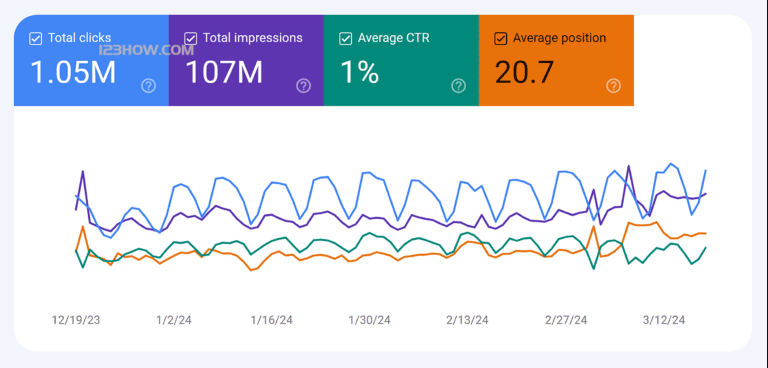
The Search Console is primarily used to track the performance of a website in Google searches.
There are many must-have features for webmasters, for example:
- See which keywords bring you the most traffic
- Submit your sitemap
- Fixing Website Errors
- Check out your Page Experience Score
- More ....
In short: Setting up Google Search Console is a critical first step if you want to do good Google SEO.
2. Setting up Bing Webmaster Tools
Next, set theBing Webmaster ToolsThe
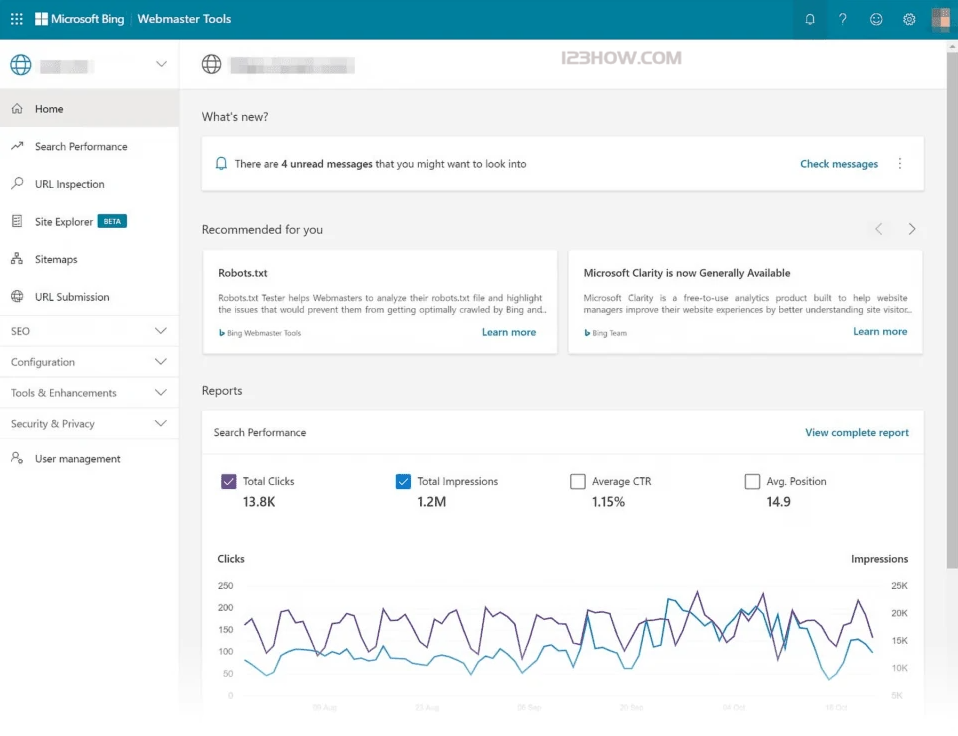
Bing Webmaster Tools
Is Bing as popular as Google? No. But Bing gets about 1 billion visitors per month. So it's worth optimizing.
In addition, Bing Webmaster Tools has some cool features like a built-in keyword research tool.
3. Setting up Google Analytics
Google AnalyticsIt's a tool to see how users find (and use) your site (not available for domestic server sites).
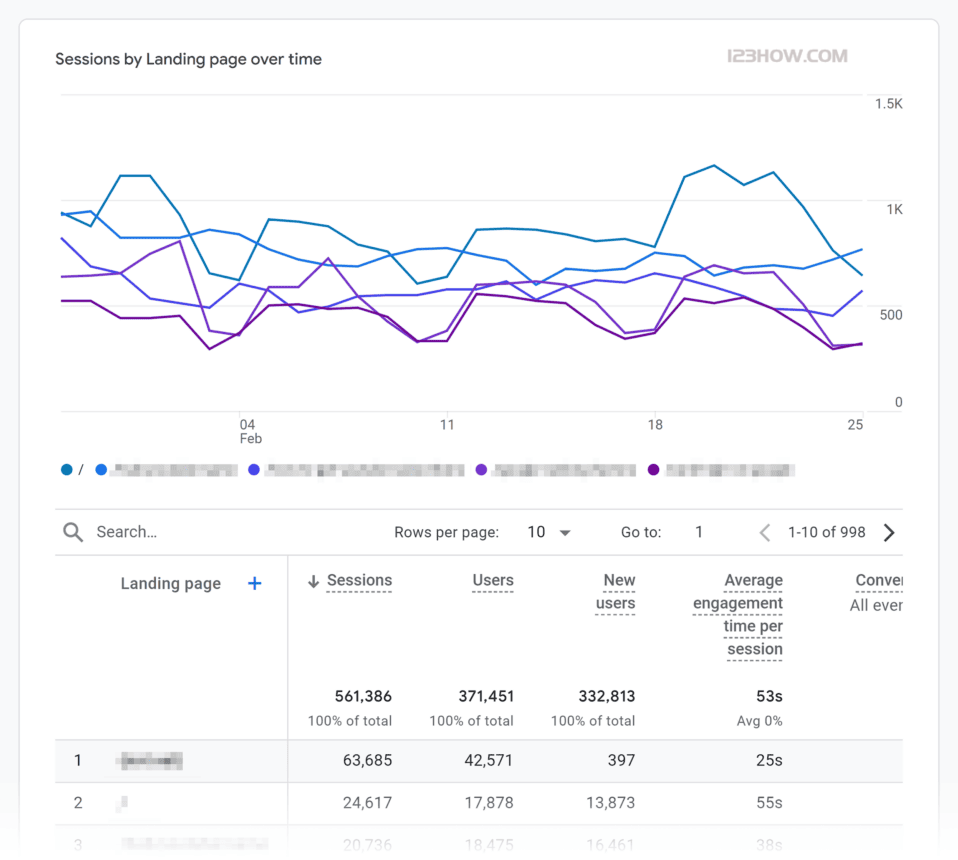
Key Features:
- See how much traffic you're getting from Google
- Find the pages on your site that bring in the most traffic
- See if your traffic is increasing (and by how much)
- Identify other websites and search engines that send traffic to you
- Your average engagement rate, page views and time on site
Pro tip: Connect Google Analytics to Google Search Console (Google Webmaster Tools). This way, you can see useful SEO information in your Google Analytics account.
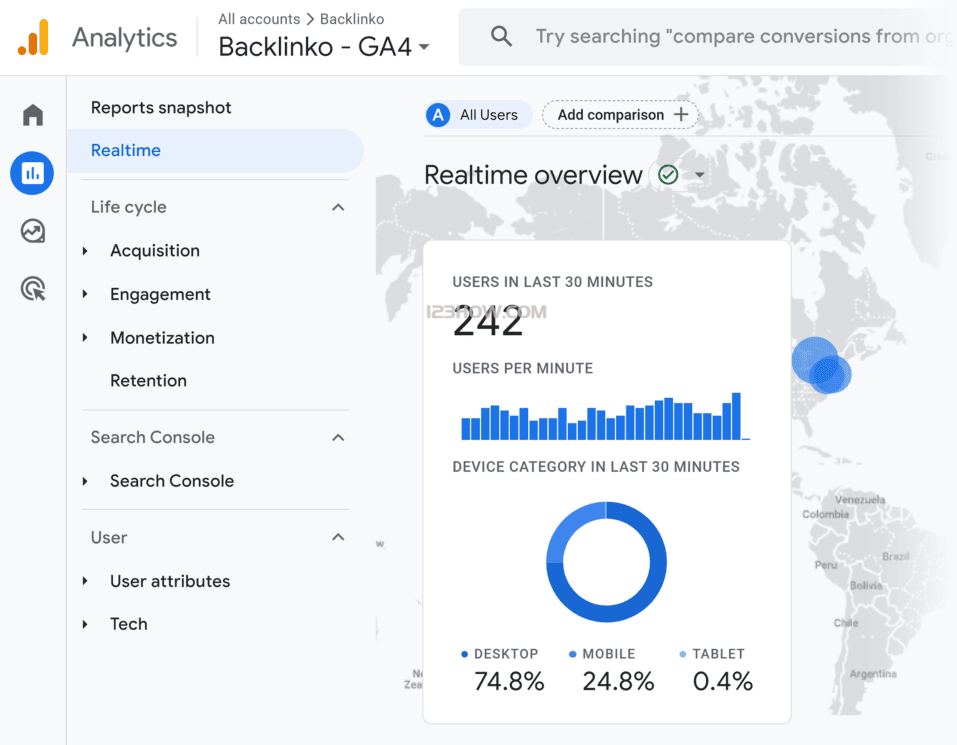 Setup steps official documentation:Google Analytics and Search Console Integration
Setup steps official documentation:Google Analytics and Search Console Integration
4. Install Yoast SEO plugin (WordPress users only)
Yoast is the most popular SEO plugin in the world.
Yoast SEO - WordPress Plugin
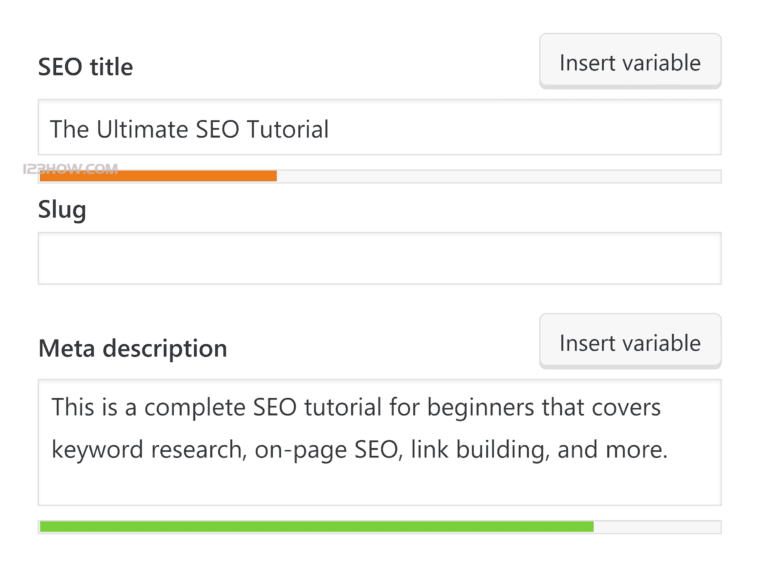 It makes it very easy for you to optimize your WordPress website for search engines.
It makes it very easy for you to optimize your WordPress website for search engines.
It also helps you with technical SEO matters such as robots.txt and sitemaps. Highly recommended.
5. Registration is freeSemrush(bank, computer etc) account
One of the first tools you need in your SEO tool arsenal is the Semrush. Even the free version provides tons of value. Here's why:
Spy on your competitors
First, the free Semrush The account gives you insight into your competitors' SEO strategies.
Analyze their popular keywords, backlinks and natural performance. Find out what works for them and use this information to enhance your own strategy.
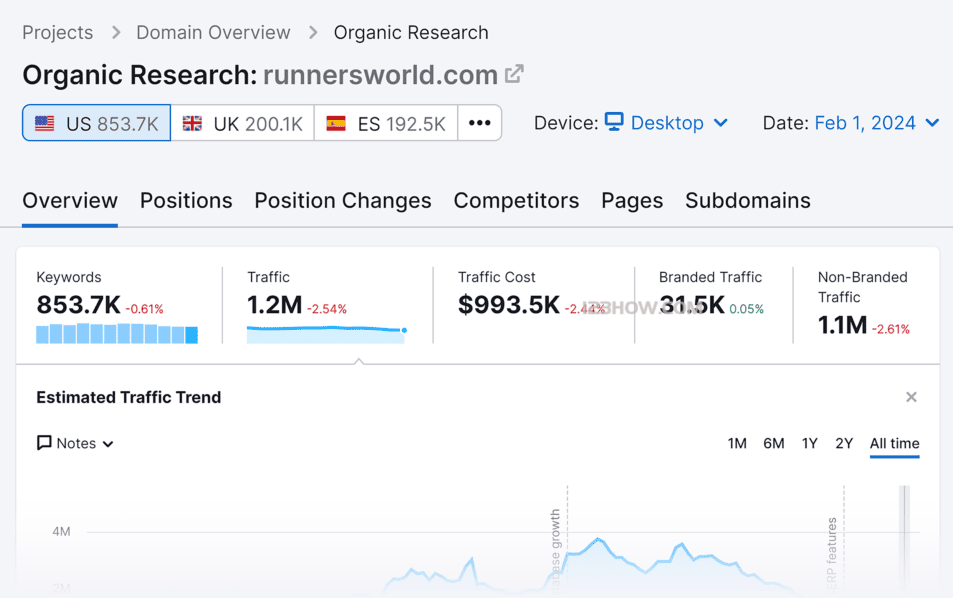
Fixing Website Issues
Second, you can run a site audit to catch and fix theTechnical SEOproblems such as broken links and slow page loads.
The free account allows you to crawl up to 100 pages, ensuring that your site is optimized for search engines and users.
Backlink Analysis Tool
Finally, backlink analysis tools are a game changer.
With a free Semrush account, you can analyze your backlinks to understand your site's authority and identify bad links that may be hurting your rankings.
Even at the free level, Semrush gives you the basic tools you need to start SEO. Once you see its value, you can always upgrade to unlock more features.
Keyword Mining Guide
Keyword research is the foundation of SEO. In this list, I'll show you how to quickly find relevant keywords that your potential customers are searching for.
1. Use "Google Suggest" to discover long-tail keywords
This is one of the best ways to discover long-tail keywords: dropdowns.
It works as follows:
Enter keywords in Google.
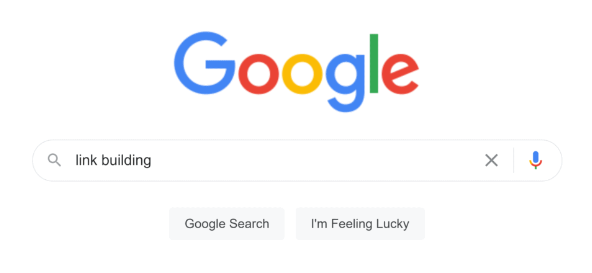
But don't click the search button. The drop-down list of keywords will then be displayed automatically:
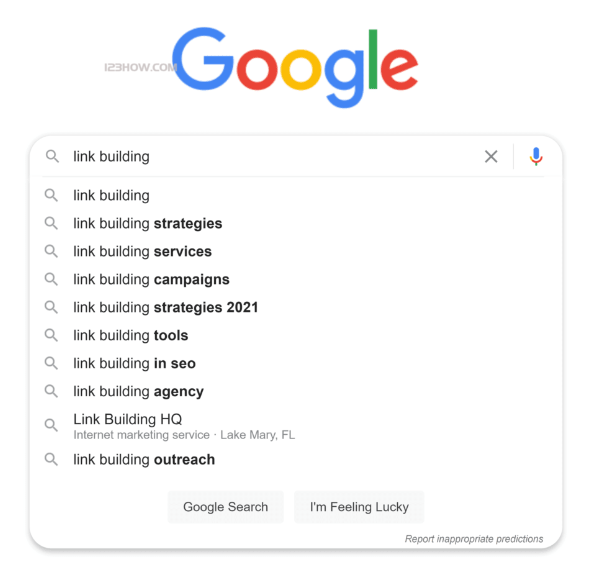
(These are called "Google Suggest" keywords.)
Because these keywords come directly from Google, you know that people are searching for them, and some of them may be your target audience.
This means they will craft valuable keywords to optimize your site.
Pro Tip:ferret outKeywordtool.ioThis tool makes the process more scalable by capturing Google Suggest keywords. This tool crawls Google Suggest keywords, making the process more scalable.
2. Find reliable keywords in Google Keyword Planner
Google Keyword PlannerIt's official Google.Keyword researchTools.
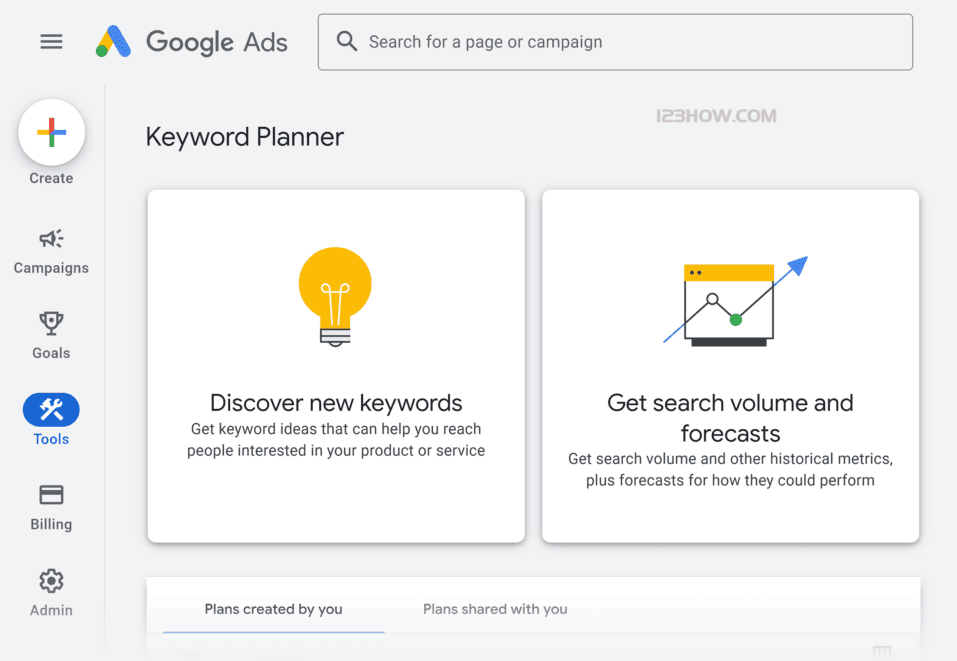
Technically, it is designed for Google Ads. Nevertheless, it's still very useful for researching and getting keyword ideas.
After all, the data comes directly from Google. so you know it's pretty accurate.
This is a guide to using Google Keyword Planner for SEO:
3. Utilizing online communities
Reddit, Quora, forums and other online communities are great places to look for keywords.
I created a video to show you how to find untapped keywords in these communities (step by step).
4. Using Semrush to Identify Low-Competition Keywords
Semrush is a freemium keyword research tool.
What's unique about Semrush is that it gives you tons of data about each keyword.
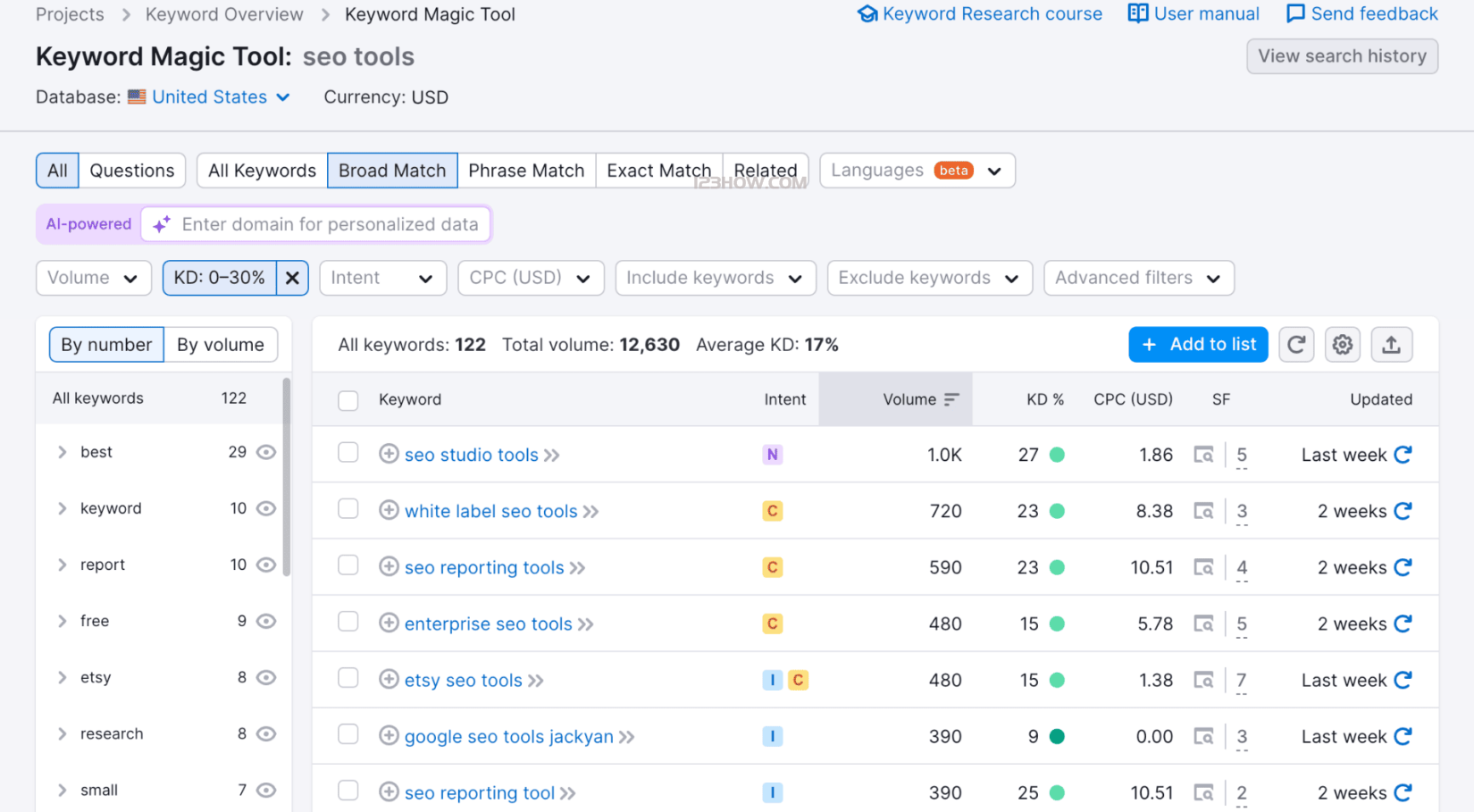
As you can see, when you enter a keyword in Semrush, you get the following information:
- search volume
- Keyword Difficulty
- cost per click
- tendencies
- SERP Functions
This allows you to choose keywords that have low competition and are easy to rank for.
5. Using Answer The Public to find "question keywords"
Question keywords are perfect for blog posts and articles.
(e.g. "How to make cold brew coffee?")
You can easily find them using Answer The Public.
This free tool shows you the questions people are searching for online.
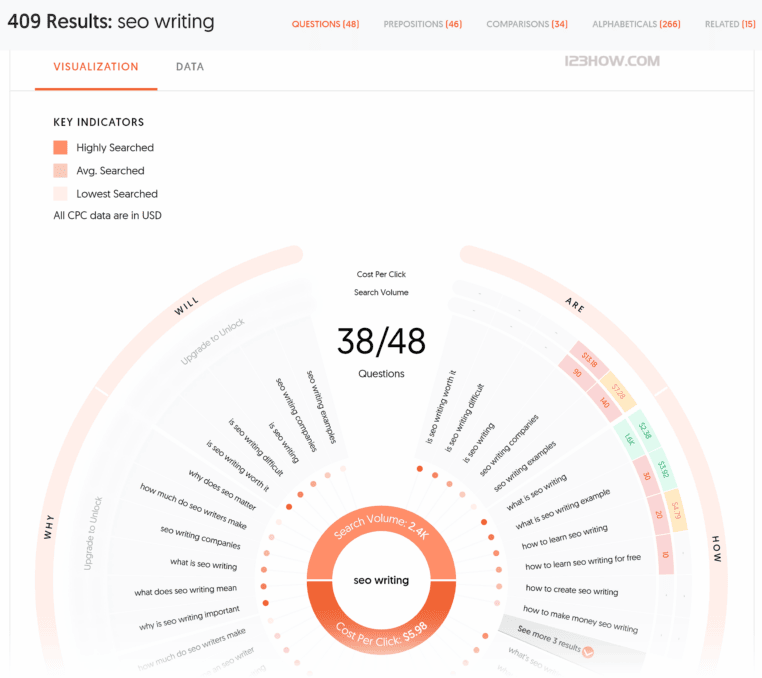
On-Page SEO Optimization
It's time to optimize your content with some tested on-page SEO techniques.
1. Include keywords in the URL
Your URLs help Google understand the content of your pages. In addition, keyword-rich URLs increase your natural click-through rate.
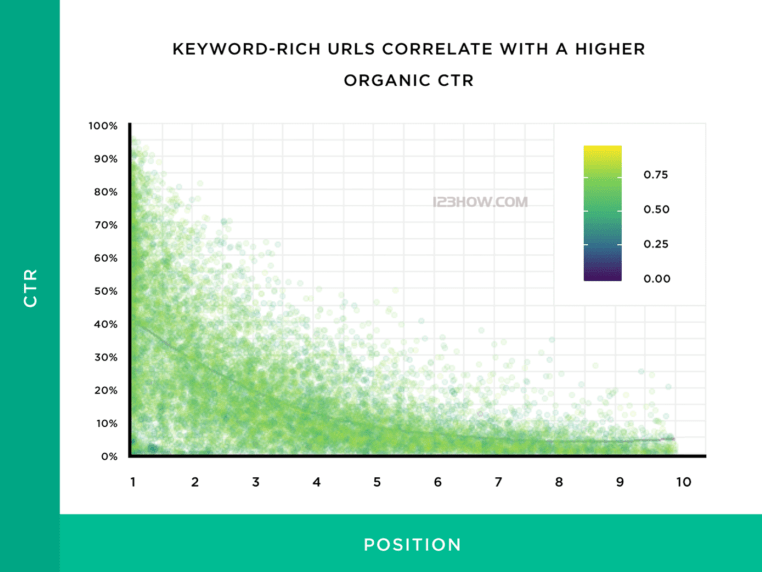
That's why you want to include keywords in your URLs.
For example, the keyword for 123how's currency conversion tool is "Currency Converter".
So I created the URL: www.123how.com/currency-converter.
2. Use of short URLs
Keep your URLs as short as possible.
Why?
An analysis of 11.8 million Google search results found that short URLs rank best in Google.
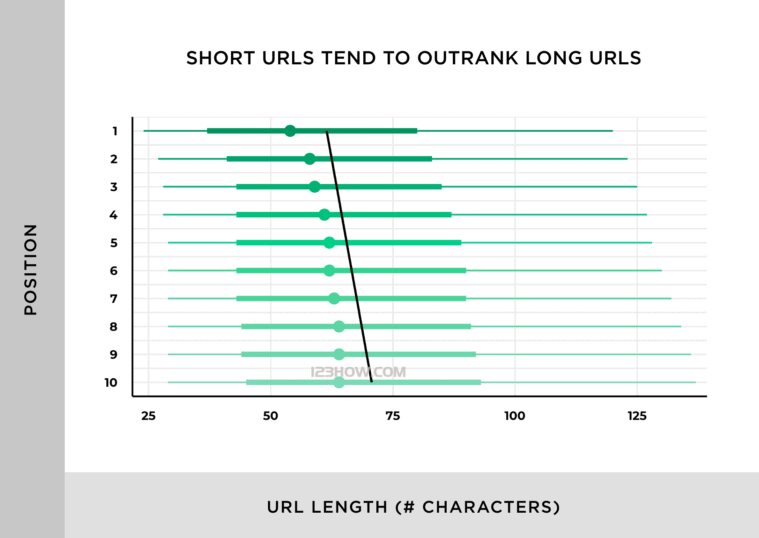
3. Preloading of keywords in title tags
Using keywords in title tags is no secret.
But not many people know that keyword placement is important.
Specifically, you want to place your keywords as close to the front of your title tag as possible.
For example, the main keyword of my article is "copywriting":
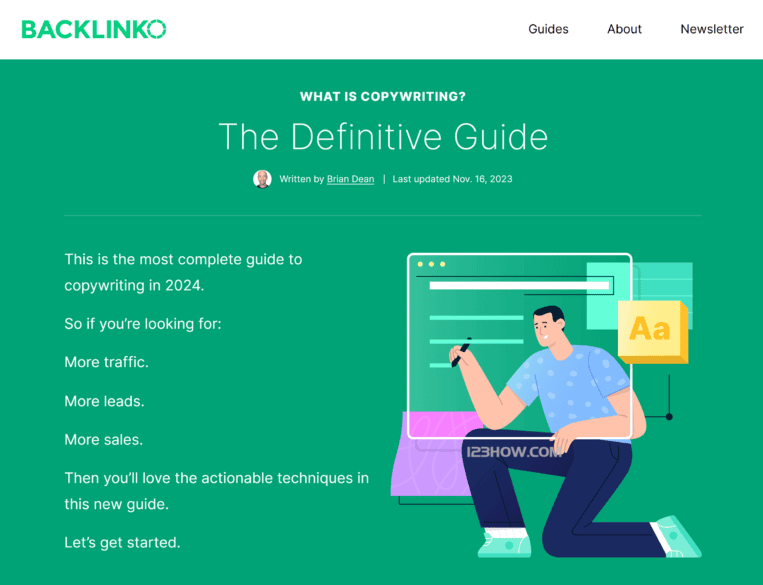
As you can see, my title tag starts with that keyword:

4. Embedded title tag modifier
Title tag modifiers are words and phrases added to title tags.
When you do this, your page can rank for many different long-tail keywords.
5. Use keywords once in the first 150 words
Google values the first 100-150 words of a web page.
So make sure you use your keywords once here.
For example, in my SEO Tools article, you can see that I immediately used the term "SEO Tools":
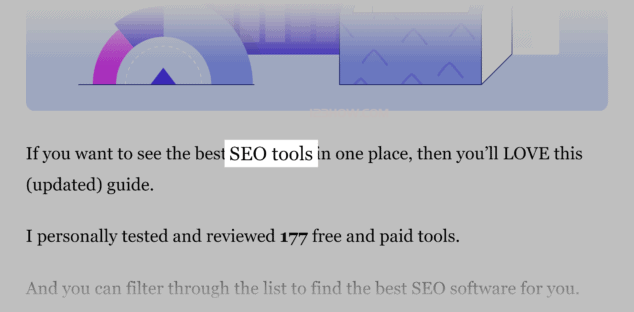
6. Use of keywords in H1, H2 or H3 tags
Make sure your keywords are included in the H1, H2 or H3 tags.
Example:
You may have noticed that I have included the term "SEO Checklist" in the first subheading of this page:
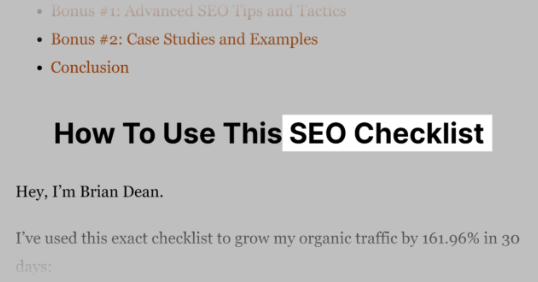
Well, this subheading is wrapped in an H2 tag. Including "SEO Checklist" in the H2 will help me rank for that keyword.
That is to say:
This tip will not have a significant impact on your search engine rankings.
But when it comes to search engine optimization, every little bit helps.
7. Optimize images
You use images that speak volumes about your content.
Unfortunately, Google still can't "see" images as well as humans.
So, to help them understand your images, you need toOptimize image alt tagsand filename.
(Plus: optimized images can also help you rank in image searches.)
That's it:
First, when you save an image, use a file name that briefly describes the image.
For example, let's say you just took a photo of a spinach omelet with your iPhone.
Well, you might want to name that image:
Spinach omelet.png
Then, when you add the image to the page, add descriptive alt tags to it:
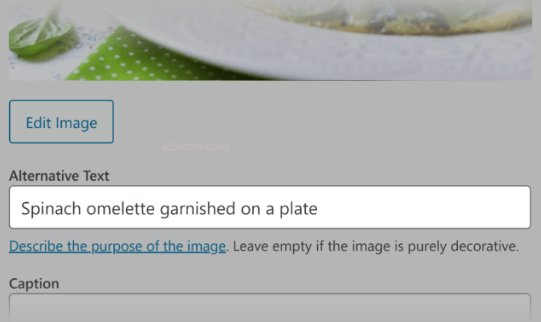
All that's here is it.
8. Use synonyms and LSI keywords
In the past, it made sense to "keyword stuff" your pages.
No more.
Today, Google is smart.
Therefore, instead of using the same keyword 1000 times, use synonyms and LSI keywords.
For example, let's say you want to rank "How to Start a Blog".
Well, you may want to mention this exact keyword several times on your page ...... as well as synonyms, for example:
- How to create a blog
- Start blogging
- How to create a blog
- How to set up a blog on WordPress
You got it 🙂 .
Next, add some LSI keywords.
LSI keywords are terms that match your main keywords.
You can use theLSIGraphFind lots of content like this.
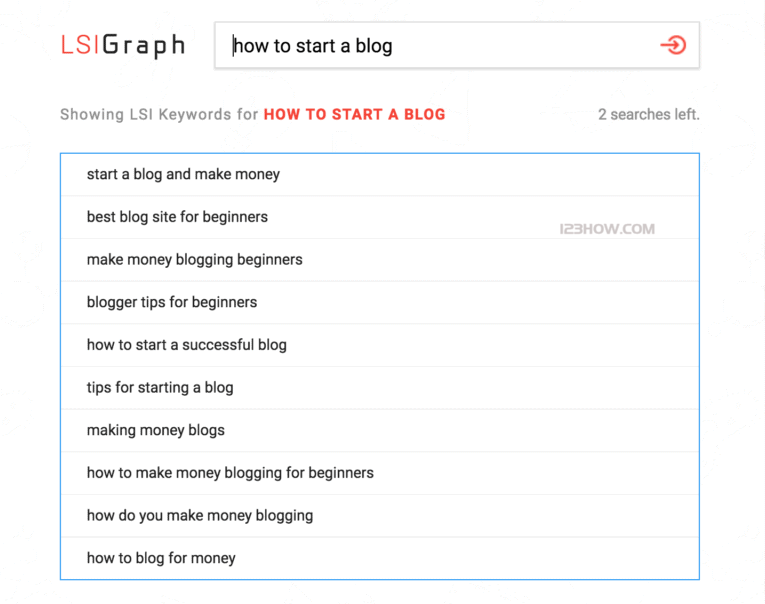
Then, simply add a few LSI keywords to your page. And you're done.
9. Use of external links
Make sure you link to 5-8 authority sites in your posts.
For example, in this list of SEO techniques, I link to trusted sites like Wikipedia and Google.com.
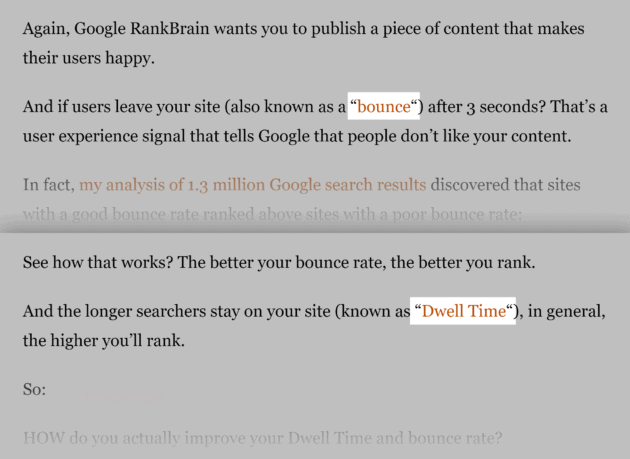
These links show Google that my content is well documented and trustworthy.
10. Use of internal links
It's very simple:
Whenever you publish new content, please link to 2-5 other pages on your site.
Pro Tip:Use keyword-rich anchor text in your internal links.
For example, notice how I use the anchor text "on-page SEO" in this internal link:
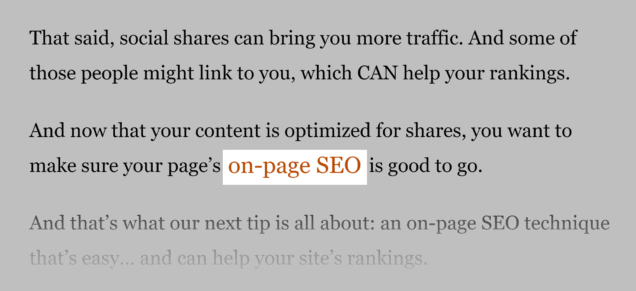
This tells search engines that the page I'm linking to is about "on-page SEO".
Technical SEO Guide
Technical SEO can make or break your rankings. Fortunately, fixing technical SEO problems isn't difficult ...... especially if you follow the items in this list.
1. Recognizing crawl errors
A "Crawl Error" means that Google and its search engine robots are having trouble viewing a page on your website.
If they can't view your page, it won't rank anything.
You can easily find crawl errors in the Google Search Console's "Coverage" report:
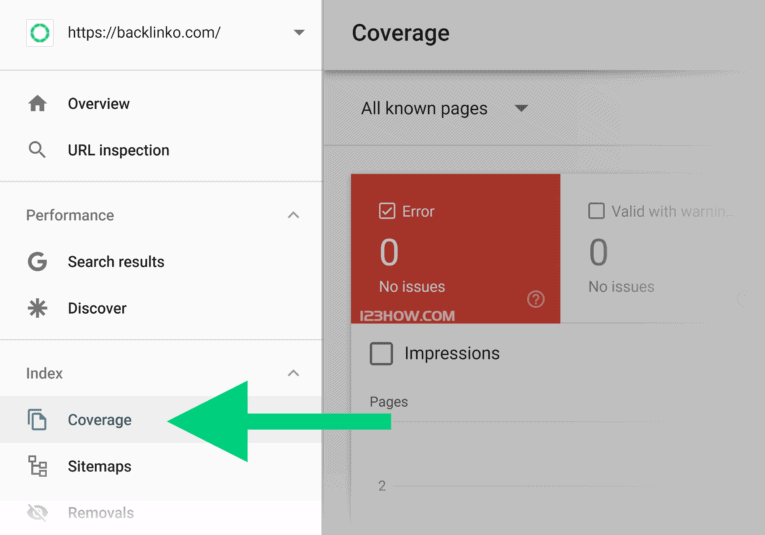
If you find that Google can't access one of your important web pages (for example, robots.txt is blocking search engine crawlers), you'll want to fix the problem as soon as possible.
2. Understand how Google views your page
Sometimes users can see all the content on your page ......
...but Google can't.
Again:
If Google doesn't have full access to your page, it won't rank it.
That's what I recommend using Google Search Console The reason for the "Check URL" function of the
Simply enter the page of your website at the top of the GSC.

When you do this, you will see your page from Google's point of view:
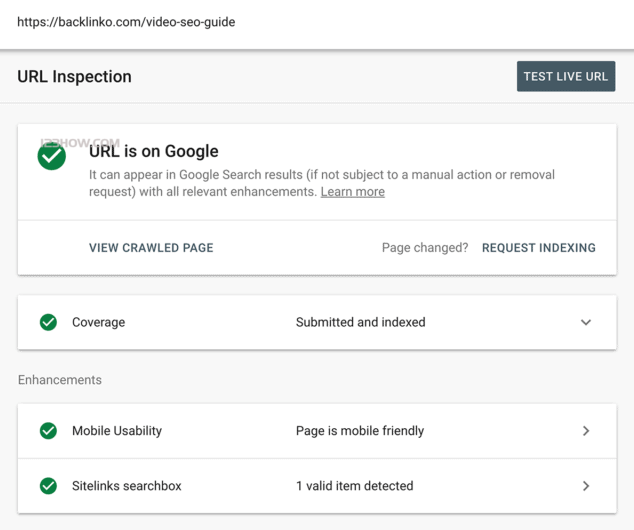
Very helpful.
3. Make sure your website is mobile-friendly
Google officially launched "Mobile-First Index" (mobile-first indexing).
Meaning:
If your website is not optimized for mobile devices, it will not rank well.
Fortunately, it's easy to see if Google considers your site "mobile-friendly".
WebPageTestwill tell you if your site is properly optimized for mobile devices.
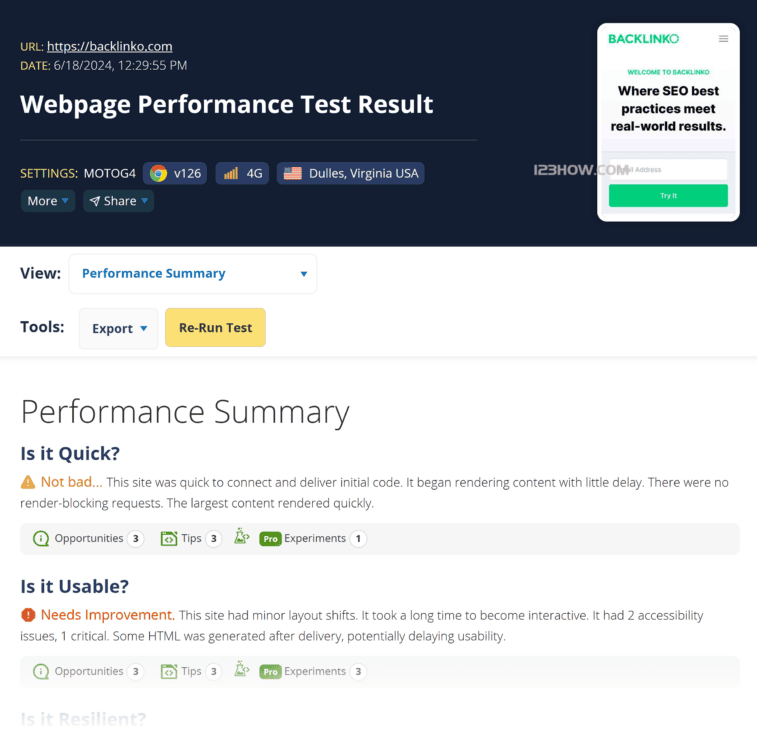
Cool!
4. Fix dead links
Broken links can really hurt your SEO.
So you definitely want to find the broken links ...... and fix them.
What's the easiest way to do this?DrLinkCheck.comThe
This is a free tool that scans your website for dead links:
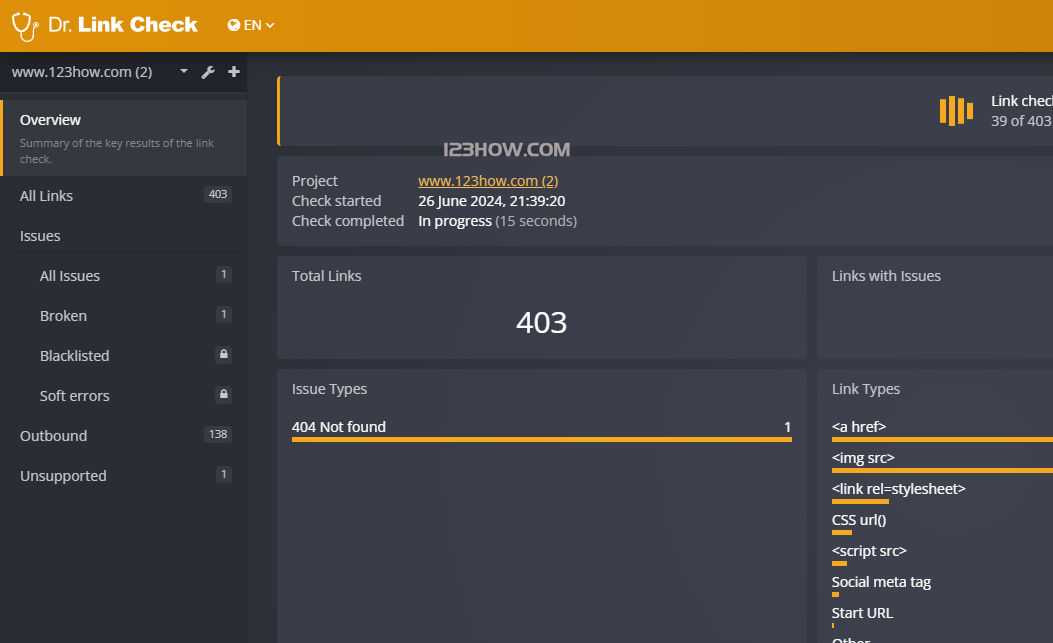
5. Protecting your website with HTTPS
HTTPS is a confirmed Google ranking signal.
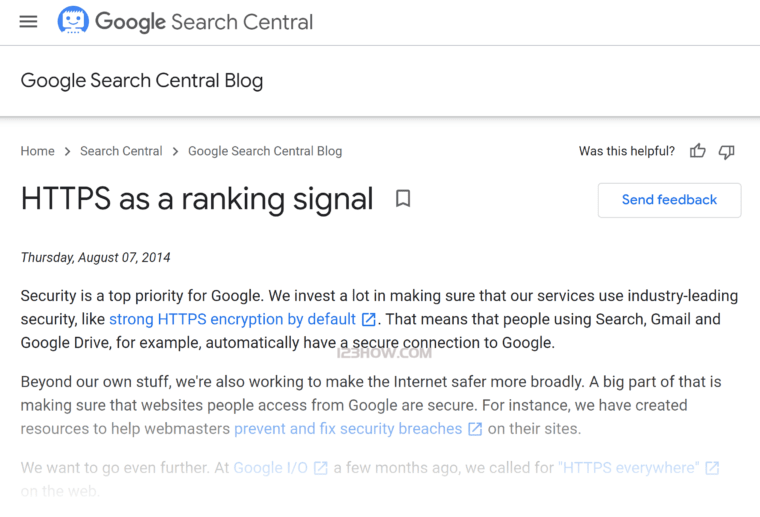
So, if you haven't already done so, it's time to move your site to HTTPS.
(Or, if you've just launched a new site, set it up using HTTPS on day one.)
The following guide can help you migrate your website to HTTPS... without hurting your SEO.
6. Check the loading speed of the website
Does your website load very fast?
If not, your site won't rank as high.
This is where you go to Google PageSpeed InsightsThe reason.
This free tool lets you see how fast your site loads for desktop and mobile users, and here are the results of 123how's test (domestic themes are still bloated):
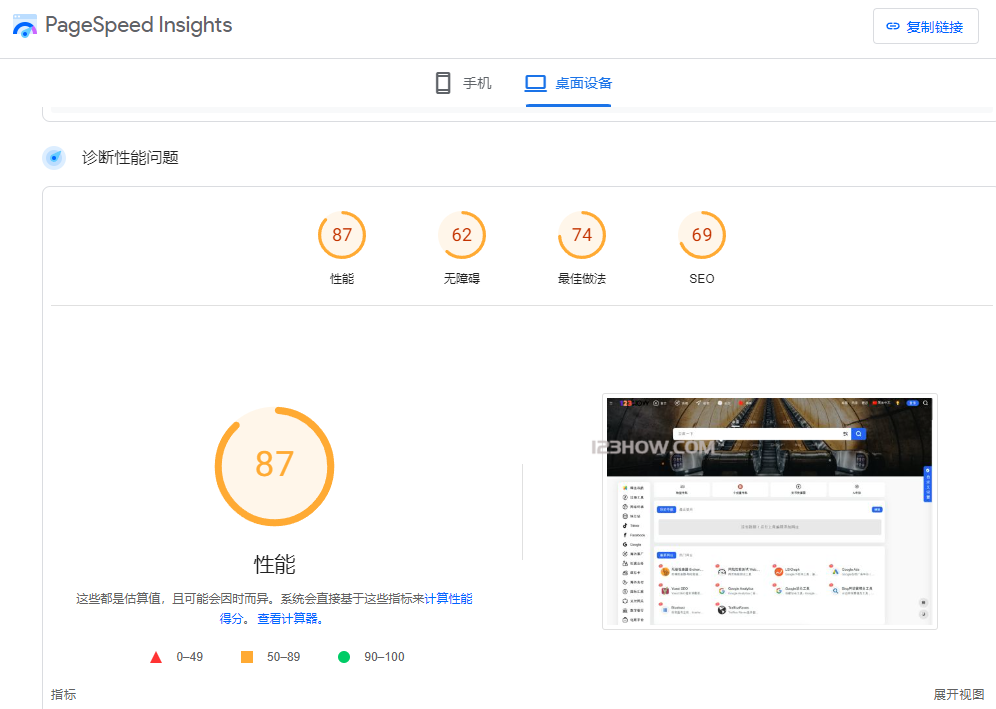
It will even let you know what you can do to speed things up.
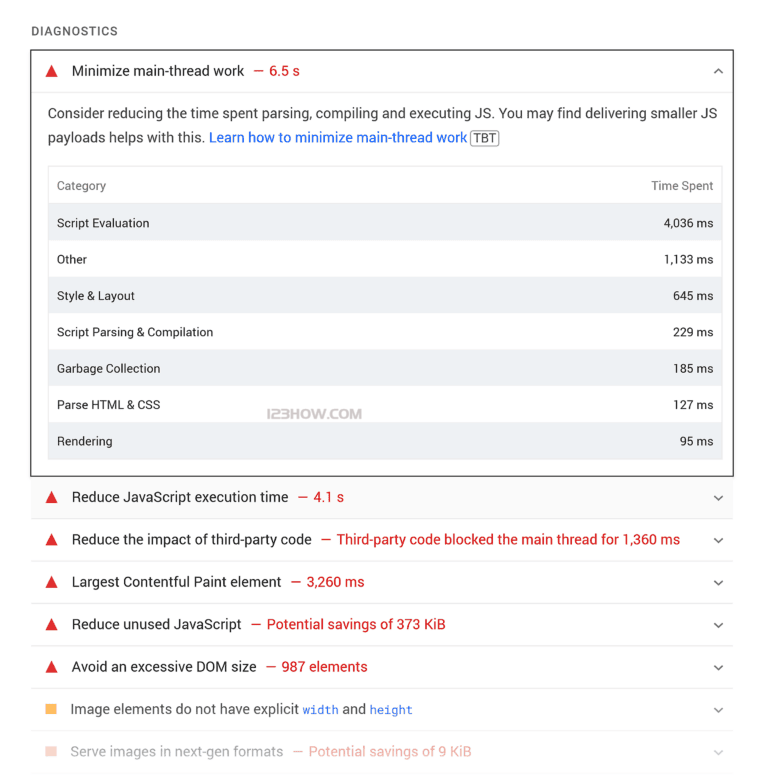
Content SEO Guide
There's no denying it: if you want to rank on Google, you need to publish quality content. That's why content is now such an important part of any modern SEO strategy. In this section, I'm going to show you the exact steps to creating the type of content that will rank in 2024 (and beyond).
1. Creating quality content using "skyscraper technology"
The Skyscraper Technique technique is a powerful formula for publishing quality content. If you don't understand thisContent Creation FormulaWhat it means can be found out here:Skyscraper Technique
In fact, I doubled my search engine traffic using this technique:
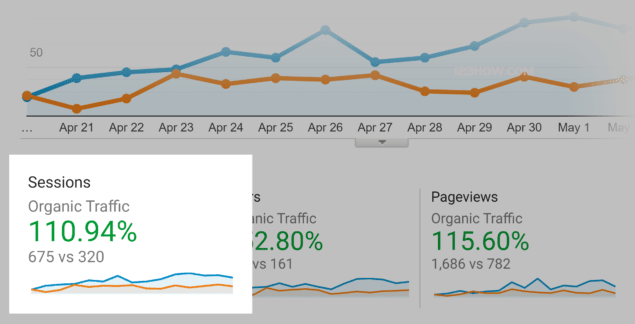
Here are the 3 steps:
- First, identify what's hot in your industry
- Next, create something better
- Finally, promote the content
Obviously, I don't have enough space to discuss these steps in detail here.
So if you want to learn more about the Skyscraper Technique technique, here are two useful tutorials:
Skyscraper Technology: Link Building Case Studies (Organic Traffic Increase 110%)
Youtube Video Tutorial: White Hat SEO Techniques (Organic Traffic Increase 59%)
2. Break content into chunks to maximize readability
No one likes to read large passages of text:
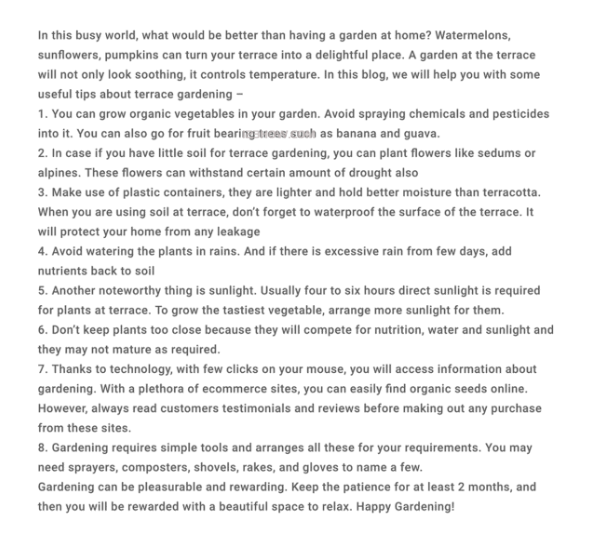
That's why I always break up my content into easy-to-read sections, as shown below:
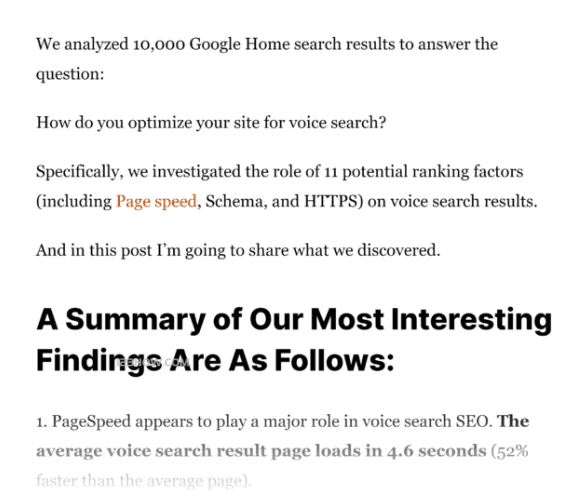
These blocks keep my bounce rate low, which is a key factor in Google rankings.
3. In-depth introduction to the topic of your page
When we analyzed over 11 million Google search results, one thing stood out:
Highest ranking content in GoogleOften covering entire topics in depth.
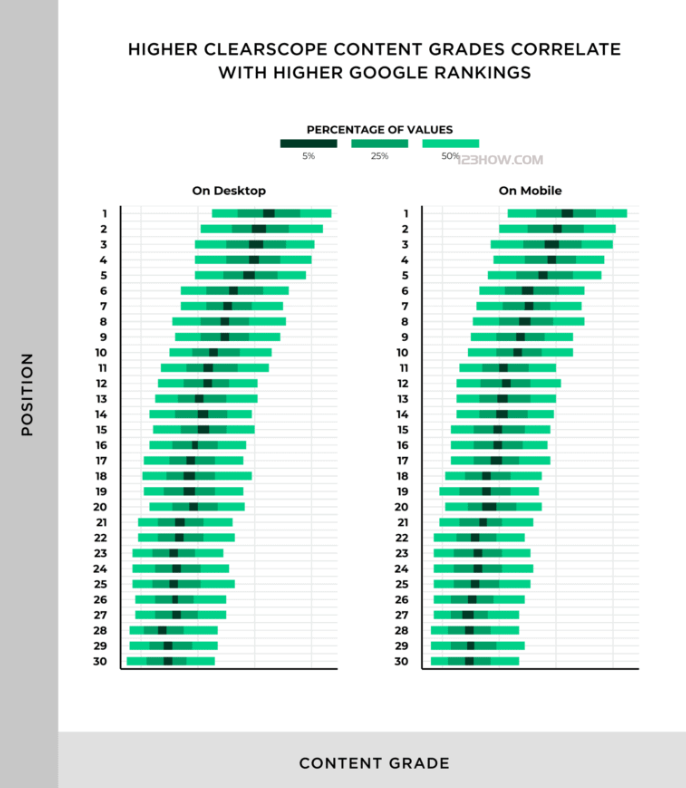
For instance, not too long ago I posted this guide on my website.
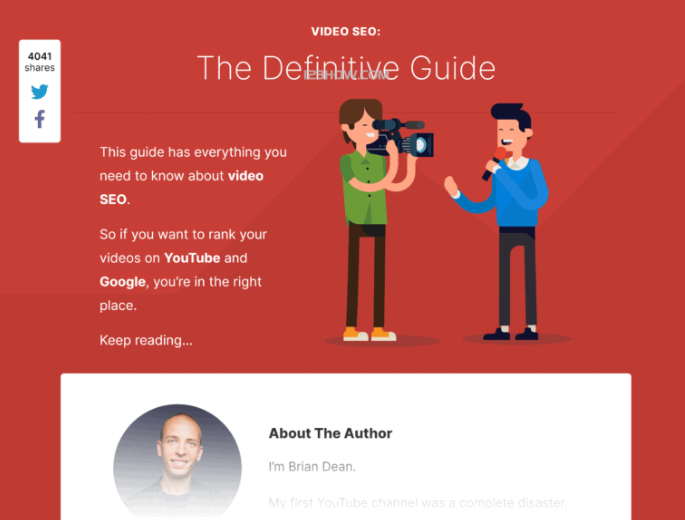
I could have posted a generic piece of content such as "5 Tips for Video SEO".
Instead, I created a guide that covers everything on the topic.
That's the main reason it ranks in the top 3 in Google for my main keyword:
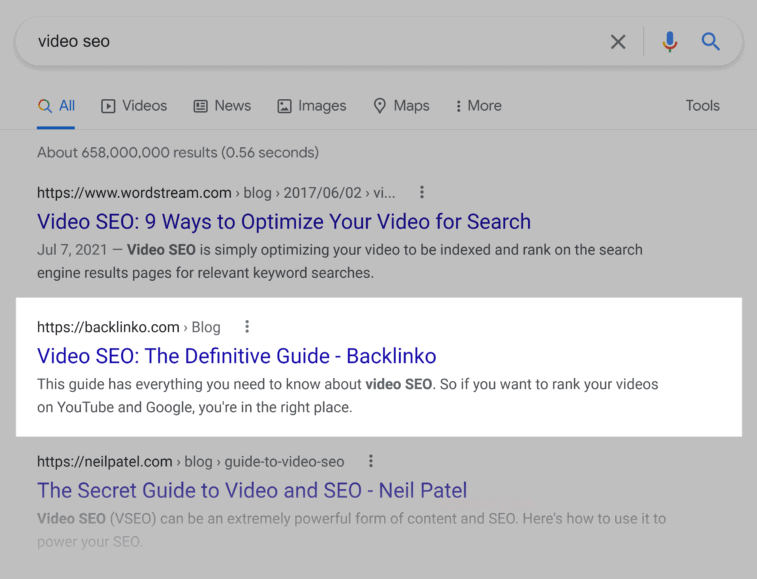
4. Use of Schema tags
Architectural markup helps search engines better understand your content.
That said, implementing Schema can be tricky.
That's what I recommend.Google Structured Data Testing ToolThe reason.

It makes using Schema much easier than trying to do it manually.
5. Focus on currently valid content formats
The BuzzSumo team recently reviewed 100 million articles.
So, what did they find?
First, the bad news:
"Most of the content has no backlinks."
Ouch.
Now, there is some good news:
They found that certain content formats outperformed others.
Specifically, "the biggest winners are the sites that have built a reputation for original, authoritative content."
What do they mean by "original, authoritative" content?
- Content written by experts
- Original research (e.g. surveys and industry studies)
- Content is more than just restating information
- Case studies and real-life examples
- Evergreen content that has provided value for years
6. Use of multimedia
You may notice that this post contains a lot of pictures.
I do this for two main reasons:
in the first place, it's just about providing better content.
secondly, images and other forms of multimedia help the content to rank better.
Therefore, I recommend using the following forms of multimedia in your content:
- photograph
- diagrams
- infographic
- Visual content
- video
- Interactive polls and quizzes
Now it's time to introduce a very important part of SEO: link building.
Link Building Guidelines
When it comes to SEO, link building is key. In fact, Google has identified backlinks as one of its "top 3" ranking signals. Unfortunately, building links isn't easy (which is why most other SEO lists skip this step). But if you want to rank in Google, links are essential. In this section, I'll show you how to do just that.
1. Build strong backlinks through guest posting
Guest posting can be a very effective link building strategy.
That is to say:
There is a right way and a wrong way to publish a guest post.
The right way:Publish your guest posts on respected sites in your industry.
Wrong way:Guest post on any site that has a "write for us" page.
In fact, I only publish guest posts on sites that will bring me targeted traffic.
For example, I published this guest post on the Buffer blog:
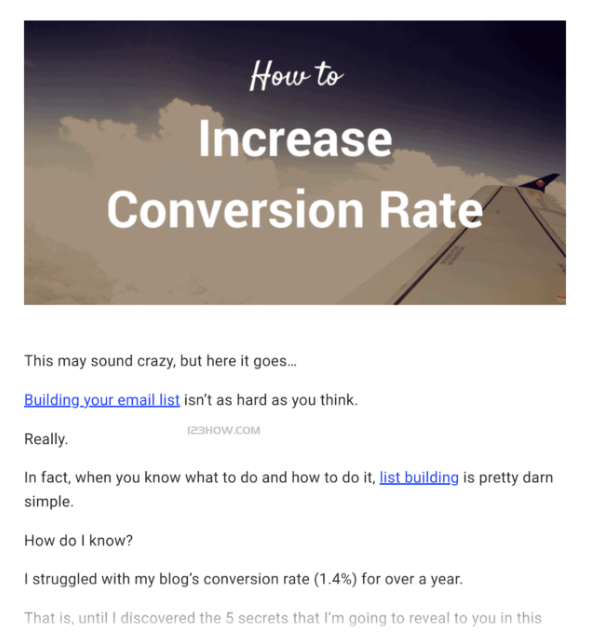
Not only do I get tons of backlinks from my guest posts, but I also get a decent amount of traffic:
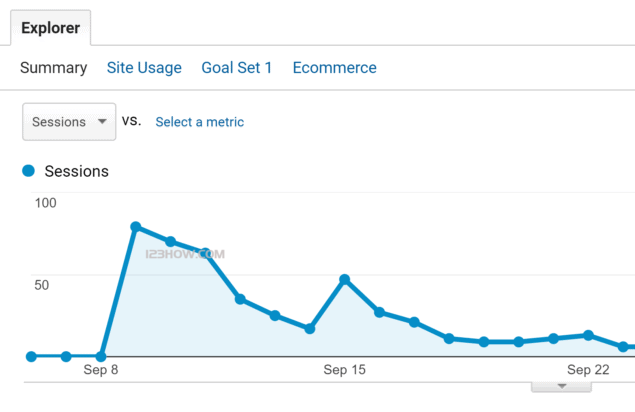
2. Reverse competitor backlinks
Why reinvent the wheel when you can copy a competitor's link feed?
For this, you need a link analysis tool.
My personal useSemrushThe
But if you're on a budget, you can use freemium tools such asLink Explorer(from Moz).
Regardless of which tool you choose, the process is exactly the same:
- Get the URL of a competitor.
- Putting it in the tool
- Finally, get as many of their links as possible
For example, here is a link report from Semrush's website:
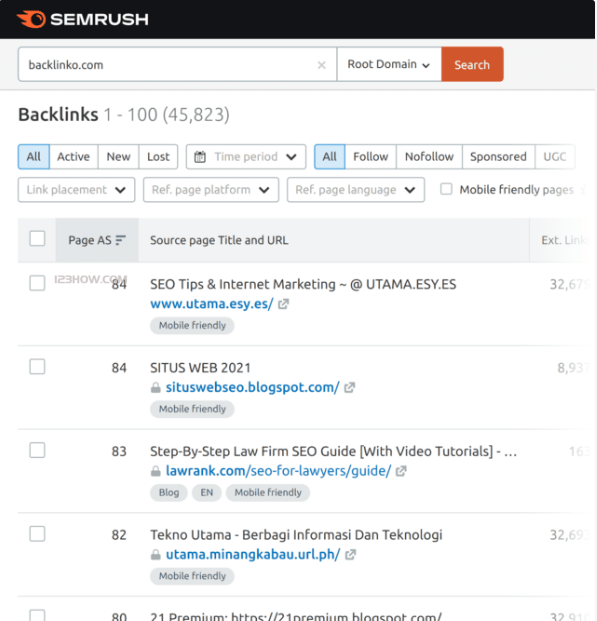
Now:
Some of these links are nearly impossible to replicate.
(For example, links to sites with which I have a relationship.)
But a lot of it is easy to replicate.
(As in links from guest posts and interviews.)
3. Using link summaries to build contextual backlinks
This strategy is very effective.
That said, there is a catch to this.
4. Be a guest on the podcast
This is similar to guest posting.
However, instead of contributing articles, you join the podcast as a guest.
For example, I participated in this podcast a few years ago:
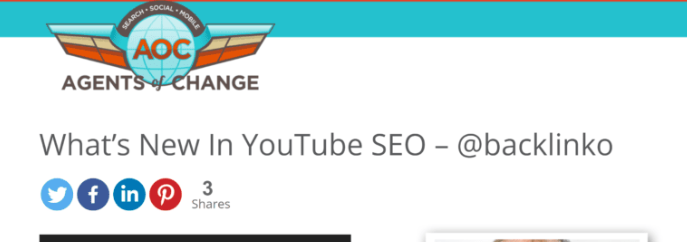
As you can see, I got a good backlink (and some targeted visitors).

5. Mentioning influencers in blog posts
The process couldn't be simpler:
First, mention influential bloggers in your content.
Then, let them know you mentioned them.
(Honestly, that's it.)
For example, when I publish my list of SEO tools, I let the founders of each tool know that I recommend them:
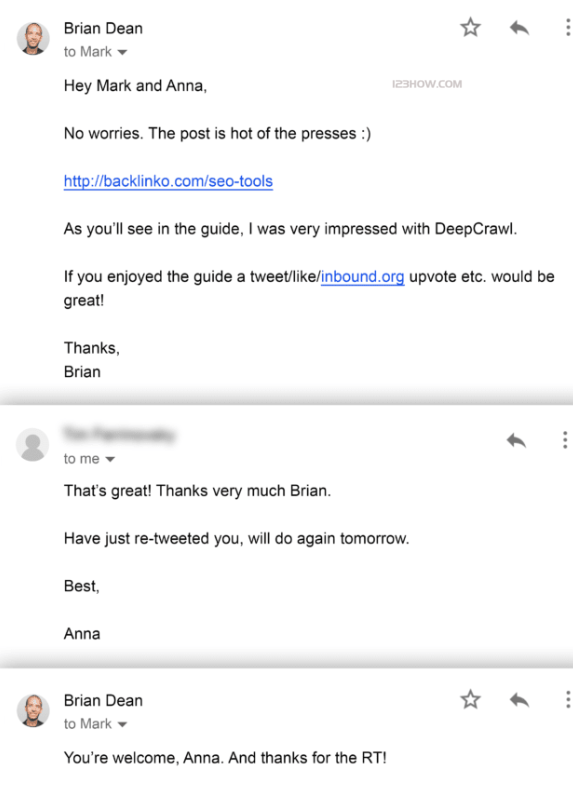
And, as you can see, they were happy to share my content on social media.
Extension 1: Advanced SEO Tips and Strategies
Now that you've mastered the basics, let me introduce you to some advanced SEO tips and techniques.
1. Optimizing website hits
No doubt about it:
The more people who click on your search results, the higher you will rank.
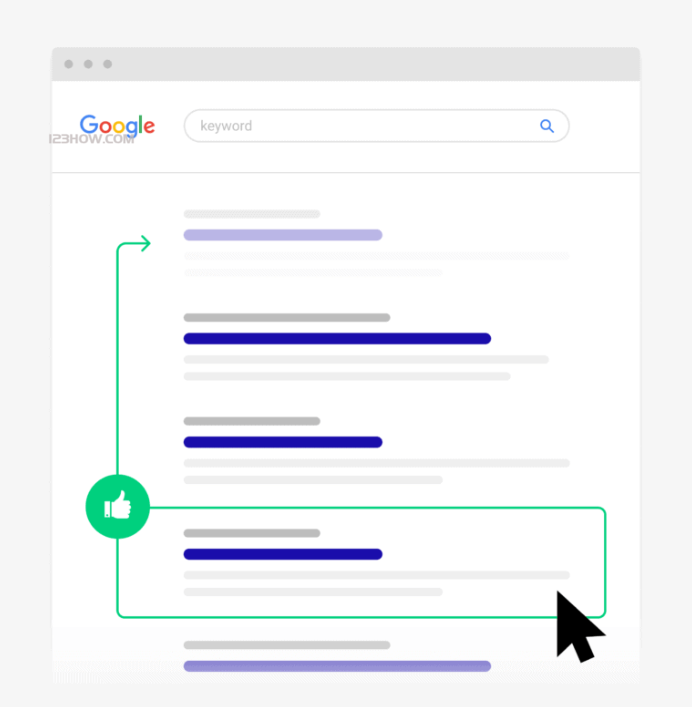
CTR (Click-Through-Rate Click-Through-Rate) is a user experience signal that Google is paying more and more attention to.
2. Limit website downtime
If your site goes down, users get angry.
As it turns out, Google is pissed off, too.
In fact, they say that an unplanned site outage "could have a negative impact on the site's reputation."
Fortunately, you can easily track website downtime using tools like Pingdom.
Pingdom pings your site hundreds of times a day.
In the event of a malfunction, you will be notified so that the problem can be resolved as soon as possible.
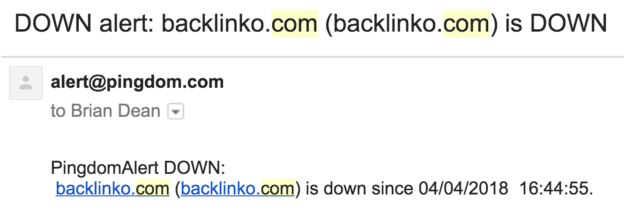
3. Deletion of "useless" pages
Google recently said that large sites with lots of pages may not be good for SEO.
Quote from Google representative (Gary Illyes):
"Narrow it down as much as possible. Don't create low-quality and non-value-added pages. It's not worth it because on the one hand we don't necessarily want to index these pages. We consider it a waste of resources. On the other hand you won't get quality traffic. If you're not going to get quality traffic then why are you wasting resources?"
That's why I want to make sure every page on my site is great.
In other words.I focus on the quality of the 100%The
While this "quality over quantity" approach clearly works, I find that many sites struggle with "useless" pages.
The burden page is below:
- WordPress Categories and Tags Page
- Outdated Blog Posts
- duplicate content
- Low quality blog posts
- Zero e-commerce product page sales
- archive page
- Thin content/sample content
- Old service page
As you've just seen, Google says that these useless pages could be hurting your SEO efforts. So I recommend deleting them.
4. Increasing the length of time spent on the site
Dwell time is another key Google ranking factor.
Google wants to see peopleStay on your site.
If people quickly jump from your page and visit other search results, it will tell Google:
"People hate this page!" .
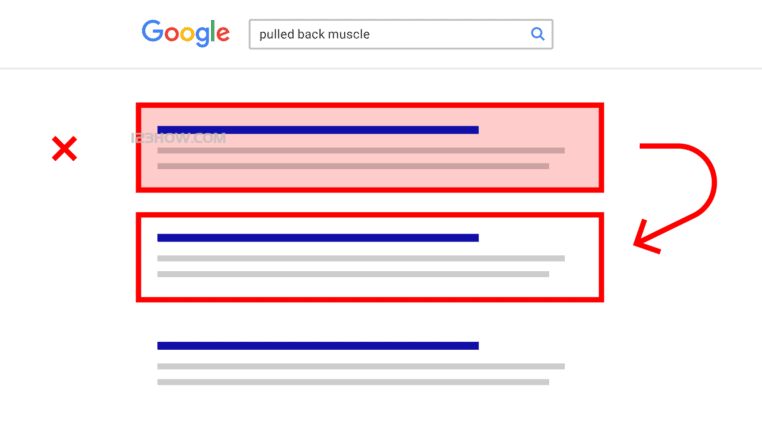
But when people get what they want from your page, they stay. Google will notice:
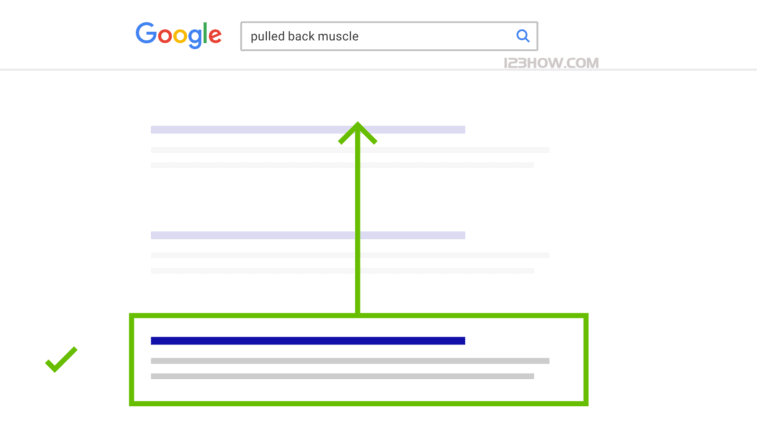
So you should understand how to handle it.
5. Update and republish outdated content
Do you have some old posts collecting dust on your blog?
If so, please check:
I recently updated and republished this post on my blog:
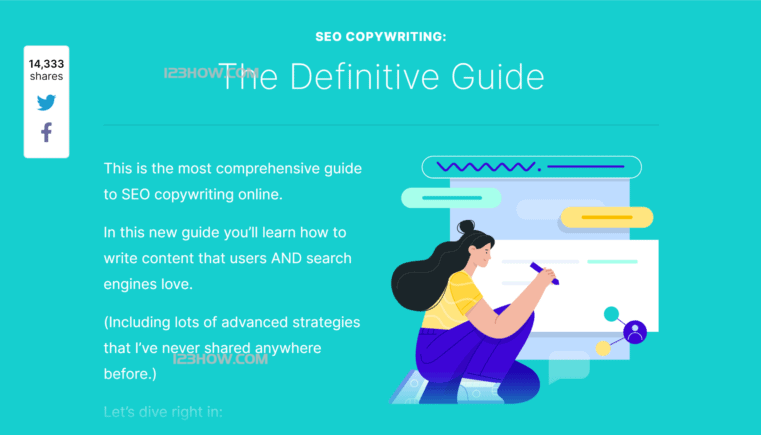
I've improved the formatting and added more meaningful content, including new screenshots and more.
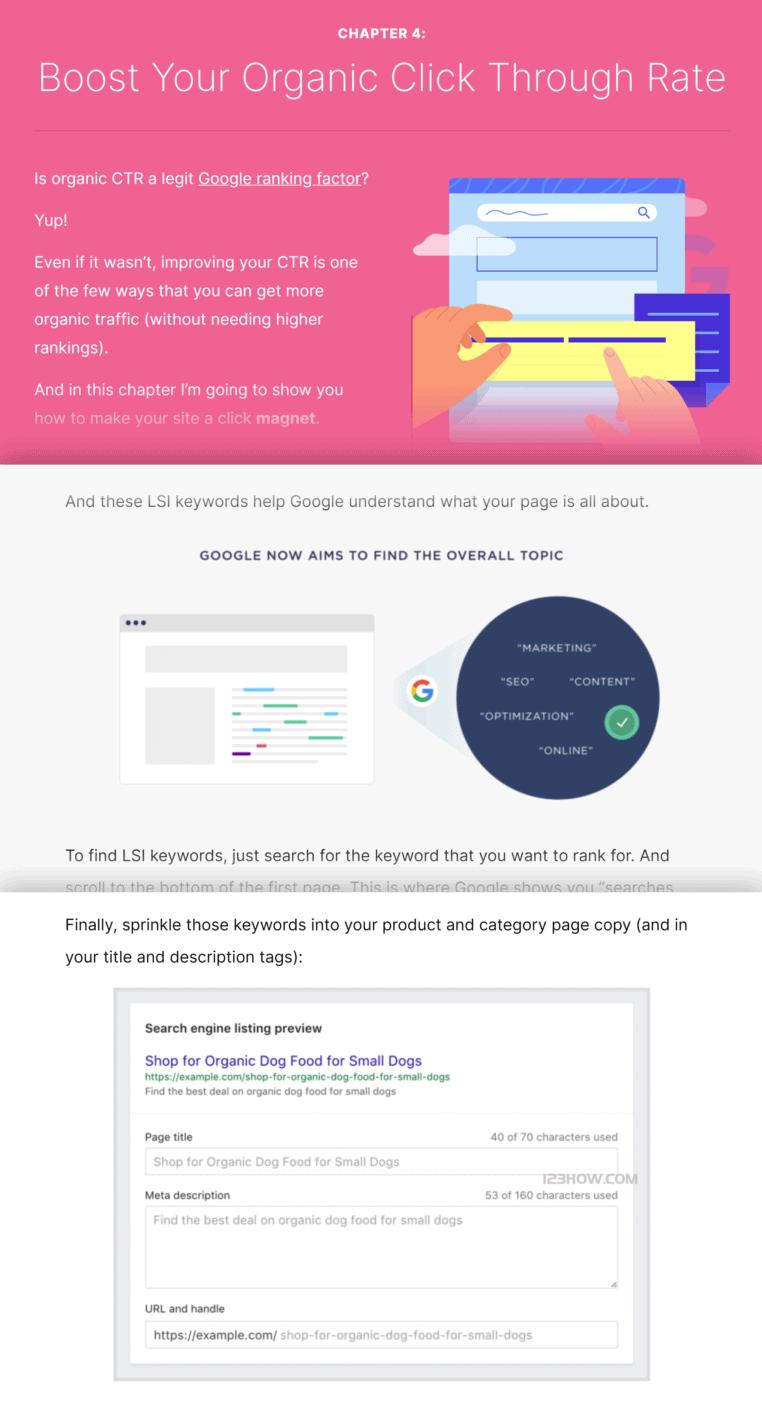
(Basically, I made the page better.)
Then I restarted it as if it were a new post.
This simple one-two punch increased search engine traffic to that page by 1,102.43%:
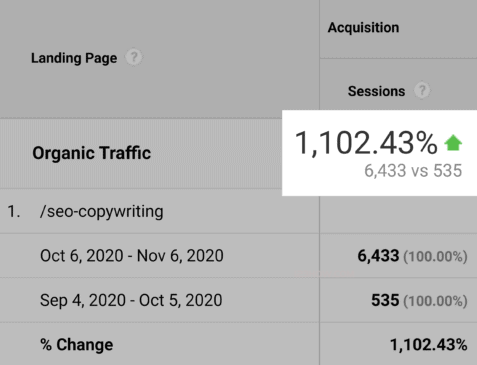
OK!
Extension 2: Case Studies and Examples
Now it's time to show you the practical application of the strategies outlined in this list.
Specifically, I'm going to show you how Sean at Proven.com increased his natural traffic by 88% using a handful of items from this list.
1. How Sean can improve on-page optimization
Sean's website has tons of pages.
Therefore, it makes no sense to spend hours on each issue.
That's why SeanFocus on optimizing his 10 most important pages.
Some of Sean's most important pages are blog posts, for example:
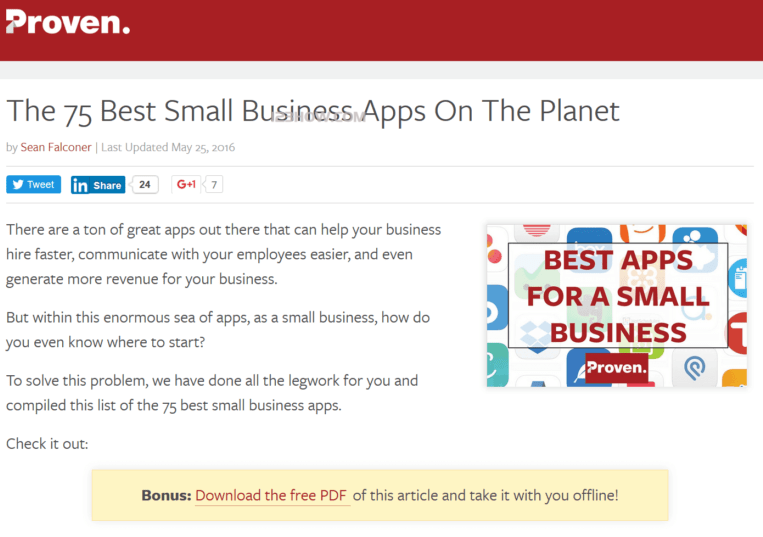
Others are service pages, such as his home page:

But overall, Sean used the on-page SEO tips from this list on all 10 pages.
Sean's content is already well optimized. So only a few tweaks are needed.
For example, let's look at how Sean could improve his post about asking questions of references.
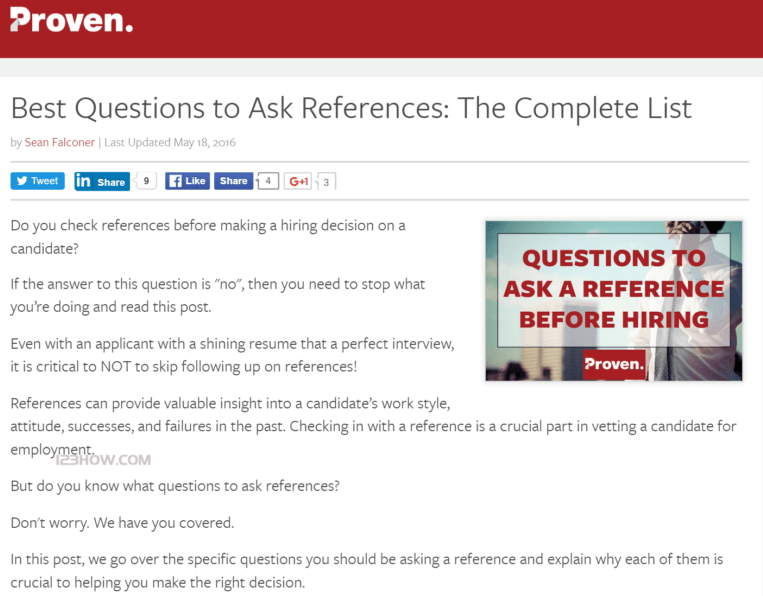
First, Sean added his target keyword ("questions to references") to the first 100 words of the article:

He also includes LSI keywords (e.g., "business reference") in his content:

Now that Sean's content is optimized for keywords, it's time to increase his click-through rate.
2. Sean How to quickly increase your click-through rate 64.1%
Sean published a post on his blog called "100+ Best Job Sites for Niche Talent".

Natural search results for this page are listed below:

Not bad ...... But could be better.
Here are the specific steps Sean has taken to increase the click-through rate for this listing:
First, he looked at the keywords in the AdWords ads, such as "job boards":
He noticed that most companies list in their advertisements theSpecific number of job boards:
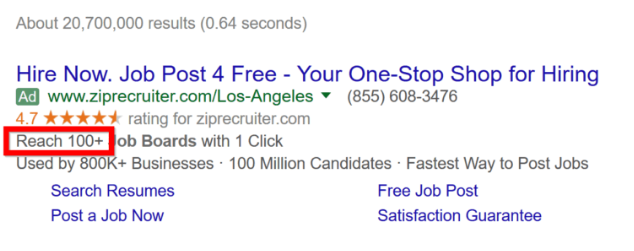
(Sean also noted that none of them used the term "niche talent.")
So Sean changed his title tag to:
"Over 100 job bulletin boards for job seekers and recruiters"
and change its meta description tag to:
"Find the best job boards on the web in one place. Check out our list of over 100 job boards here."
Here are the search results he got on Google after the change:

The page has a hit rate of 4.88%......
64.1% higher than beforeThe
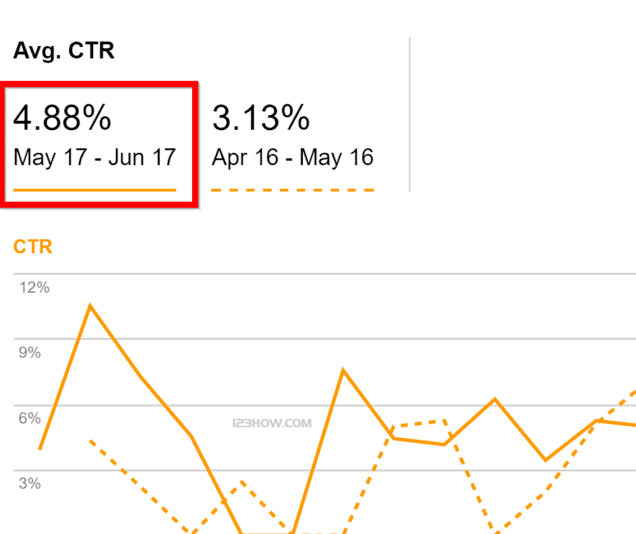
Pretty cool, huh?
3. How Sean keeps users on his site longer
If people stick to your site like strong glue, Google will improve your rankings.
That's how Sean gets people to spend more time on his site:
First, Sean pushed his content above the first screen.
How?
Well, Proven's blog posts used to have a big gap between site navigation and article titles:
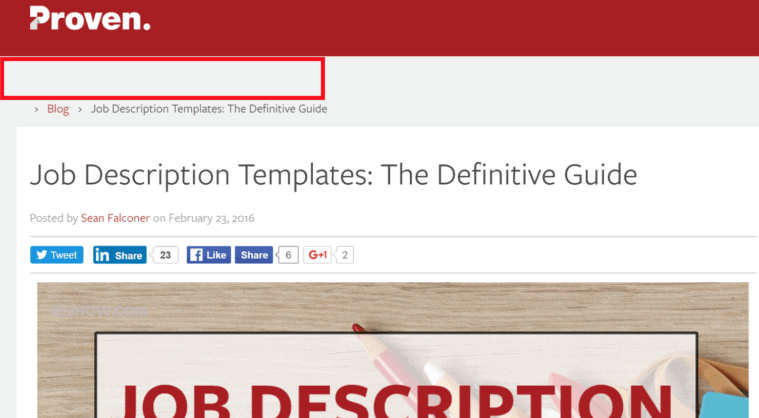
At the top of your page is million-dollar real estate.
That's why you want to avoid unnecessary space pushing content below the fold.
So he reduced that space by 50%.
Proven's blog also has breadcrumb navigation.
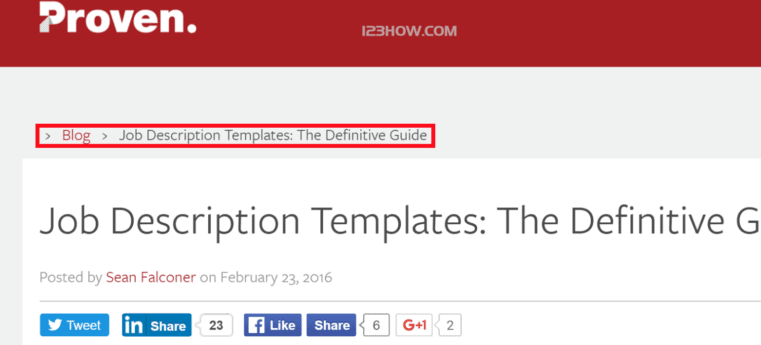
For e-commerce sites, breadcrumb navigation works. But for blogs, it's not necessary.
So Sean got rid of it.
Proven's blog posts come with tons of pictures at the top of each post.
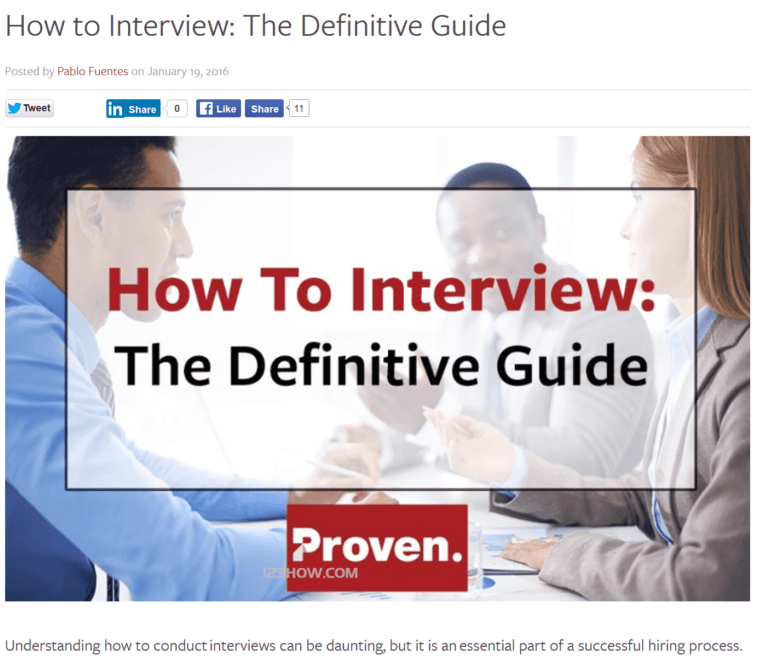
These do look cool ......
... But they pushed Sean's highlights below the first screen.
So Sean has shrunk the image he posted significantly:
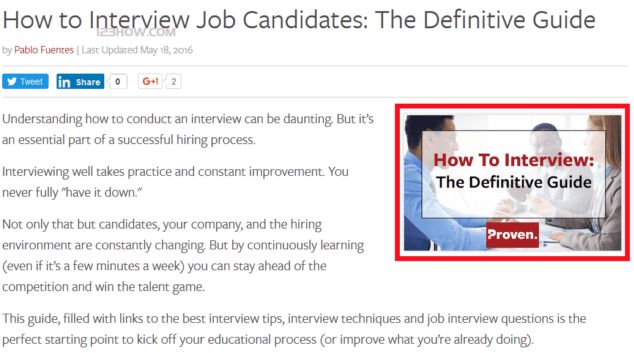
Next, Sean "tops" his blog post introduction.
Your blog post presentation is wonderful.
Because the truth is this:
If you lose someone in an introduction, you've lost them forever.
But if you engage someone with a compelling presentation ......
...they are more likely to stay.
For example, Sean introduces himself as follows:
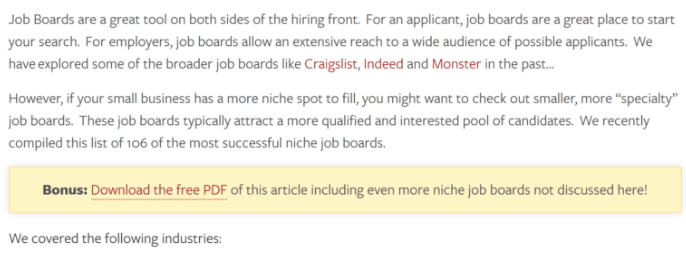
To this:
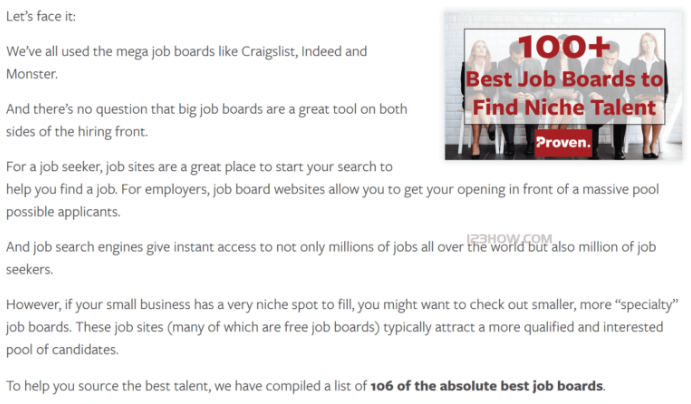
What exactly has he changed?
First, Sean deleted the obvious sentences.
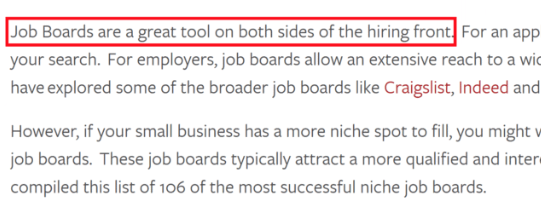
He also formatted the content so that there are only 1-2 sentences per paragraph (which improves the readability of the content).
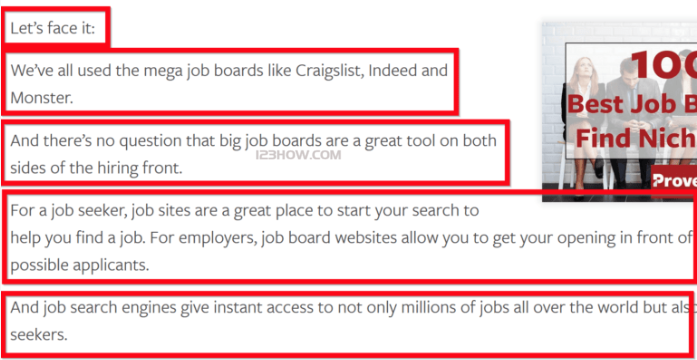
These design and presentation improvements increased Proven's "average time on page" by 12.2%:
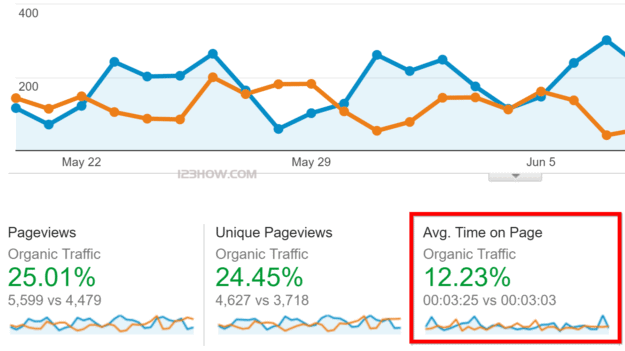
4. What happens when 10k useless pages have been deleted?
As it turns out, they have a lot of useless pages on their site.
In fact, they have 48,300 pages indexed on Google:
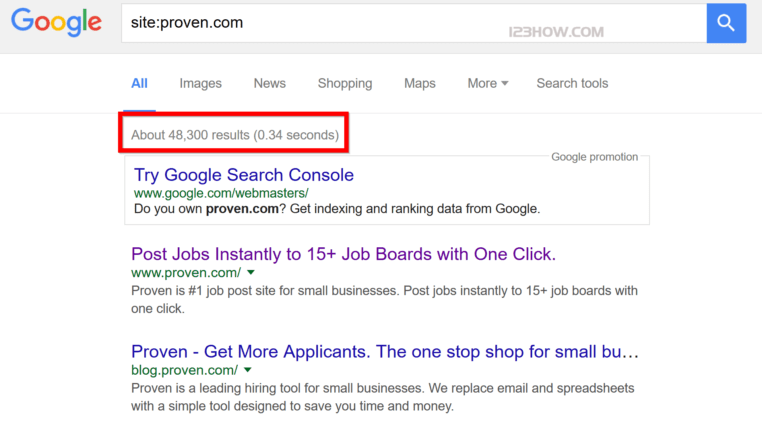
Since Proven is an online job board, they have a lot of old job postings:
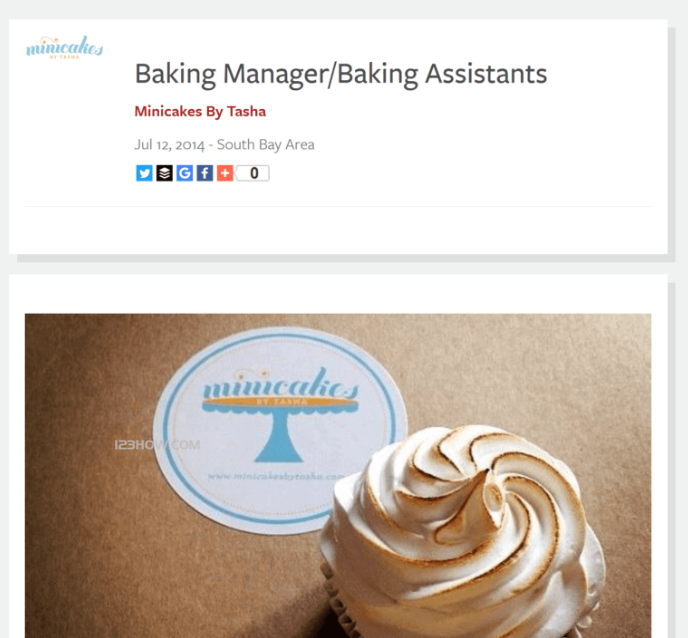
Not to mention the profile pages of companies that haven't posted a job in months:
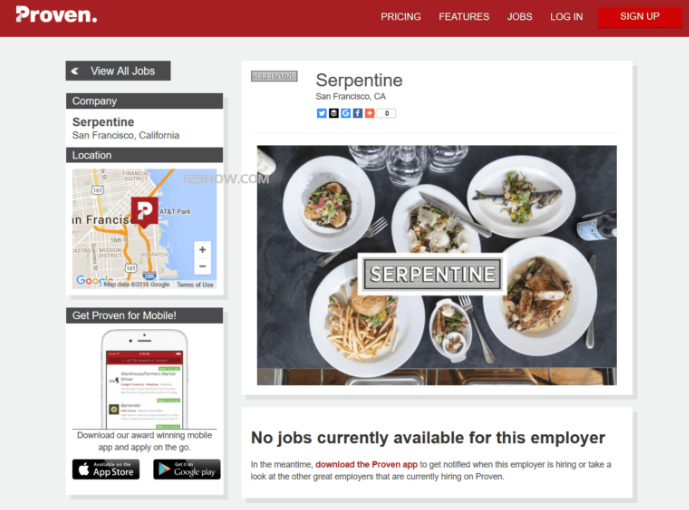
In addition, Proven's search results page is being indexed ......
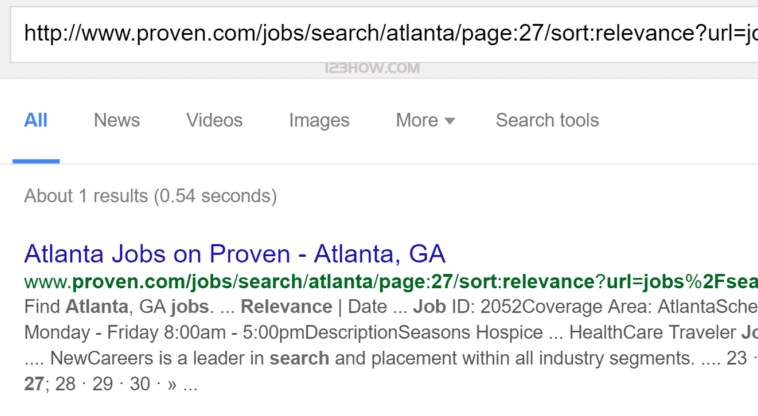
...which creates a lot of duplicate content issues.
So Sean quickly deleted or redirected the Dead Weight page at Proven.com.
Sean deleted or redirectedOver 10,000 pages.
This is one of the main reasons why their search traffic has increased so quickly.
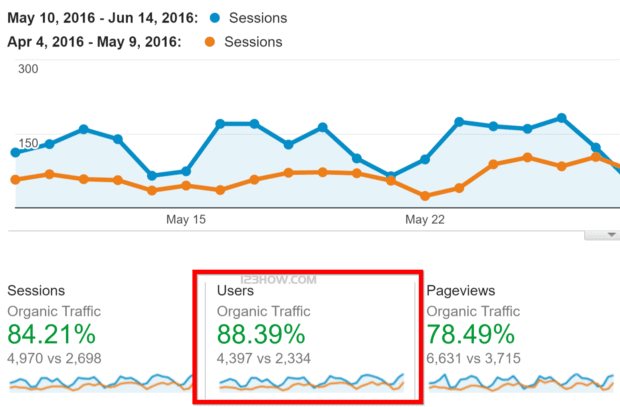
Related posts
Website Settings
URL style switching
URL Card Button
Layout settings
Left Sidebar Menu
Maximum page width
Search box settings
Customize the search box background
Customize the height of the search box
- spotlight
- text
- default (setting)









 Gan Gongwang Anbei 36070002000003
Gan Gongwang Anbei 36070002000003